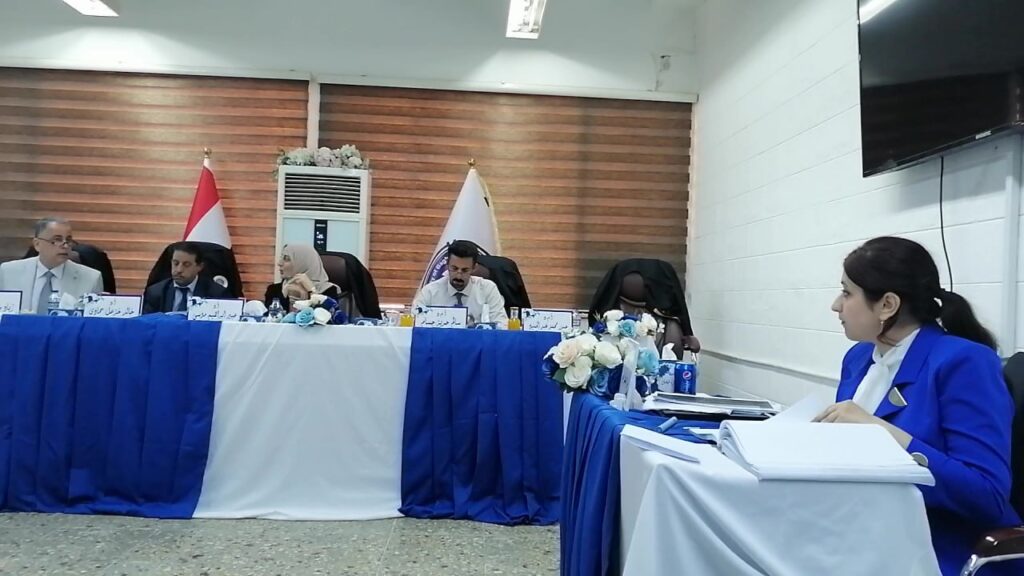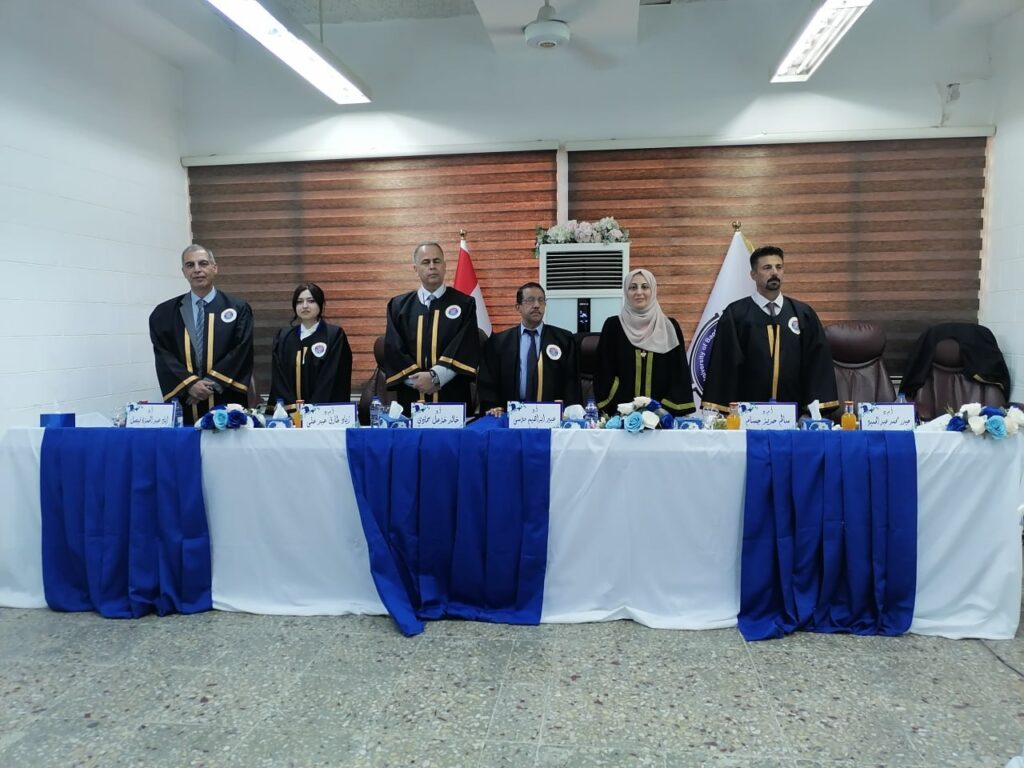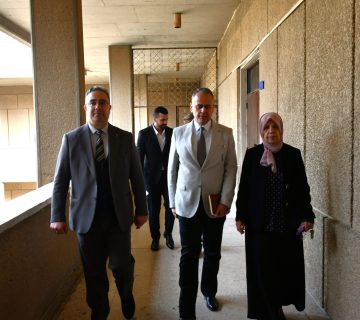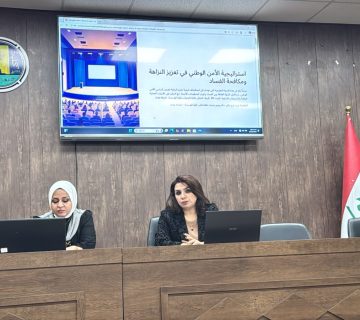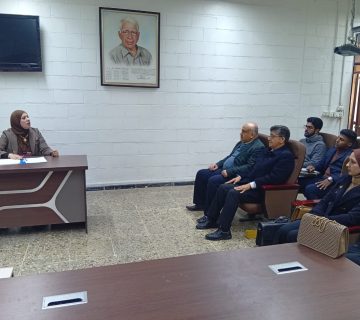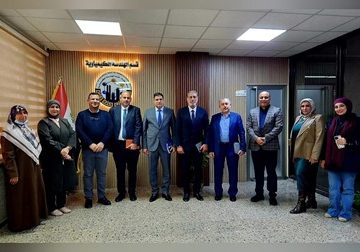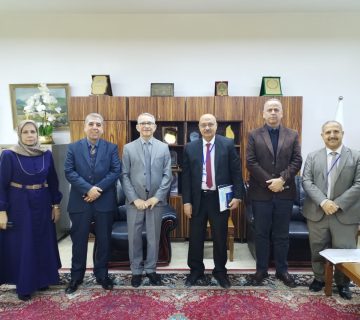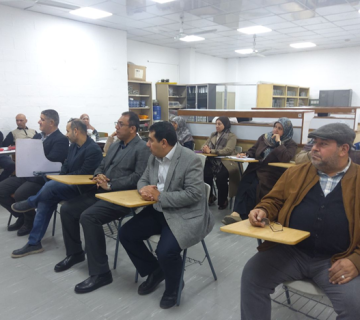Environmental Engineering Department at the College of Engineering, University of Baghdad, held PhD dissertation examination on Sunday 14\5\2023 titled:
“Green synthesis of (calcium/iron)-layered double hydroxide-sodium alginate beads for removing tetracycline and amoxicillin from subsurface environment“
By the student Marwa Faisal Abd and supervised by Prof. Dr. Ayad Faisal Abdulhamza. The examination committee consisted of Prof. Dr. Abeer Alwared as Chairman, and the membership of Prof. Dr. Khalid Khazal Hummadi, Assist. Dr. Hayder Mohammed Abdulhameed, Assist. Prof. Dr. Salim Heraiz, Assist.Prof. Dr. Ziad Tariq Abd Ali. After conducting the public discussion and listening to the student’s defense, the dissertation was accepted. It was summarized as follows:
The current work is to produce the new adsorbent from chicken eggshells wastes which support the efforts directed to reuse these solid wastes to achieve the sustainable concepts. This sorbent can be applied in the permeable reactive barrier (PRB) technique to treat simulated groundwater (aqueous solution) contaminated with selected tetracycline (TC) and amoxicillin (AMX) antibiotics. The environmental friendly preparation method includes the extraction of calcium ions from eggshells and mixed with iron under best conditions to prepare nanoparticles of calcium / iron (Ca/Fe)-layered double hydroxides (LDHs). The nanoparticles were immobilized by using sodium alginate to obtain the spherical particles named (Ca/Fe)-LDH-sodium alginate beads. The proper conditions for manufacturing of mentioned beads were molar ratio of (Ca/Fe) = 1, pH 12 and nanoparticles dosage = 5 g/ 100 mL. The TC and AMX antibiotics removal efficiencies were greater than 90% from sorption tests in the batch study which agitated at time 90 min, pH 7, speed 200 rpm and beads mass 0.5 g per 100 mL solution for 100 mg/L of initial concentration (Co). Pseudo 2nd order and Langmuir models have acceptable ability in the description of these tests with highest sorption capacities of 10.393 and 6.736 mg/g for TC and AMX respectively. Accordingly, the antibiotics molecules are distributed as monolayer on the alginate beads and bonded by chemical forces with surface through sorption process. The application of intra-particle diffusion model results in linear relationship between adsorbed quantity of antibiotic versus the square root of time. This relation is consisted of multi-linearity portions; thus, the sorption of antibiotics can be attributed to the two or more simultaneous mechanisms. The prepared beads’ characterization tests showed that (Ca/Fe)-LDH nanoparticles, calcium carbonate (CaCO3), calcium hydroxide (Ca(OH)2) and iron nitride (Fe2N) were formed; however, the antibiotic sorption was confirmed by the rising percentages of C , N and S. Electrostatic interaction, hydrogen bonding, surface precipitation, intra-particle diffusion, and π-π interactions were the most common governing mechanisms for the removal of TC and AMX antibiotics onto (Ca/Fe)-LDH-sodium alginate beads. In addition, thermodynamic study revealed that the interaction nature of antibiotics molecules with prepared beads is spontaneous and exothermic. The exhausted alginate beads can be reused for many times beyond regeneration by 0.1 M from NaOH or HCl. The results obtained from continuous column experiments illustrated that the times required for appearance of breakthrough and saturation points are drastically decreased with increase of inlet antibiotic concentration, increase of the flow rate, and decrease of bed height. Models of Bohart-Adams, Thomas-BDST, Bulter-Cussler-Hu, Yan and Clark can simulate the measured breakthrough curves for TC and AMX antibiotics with a high level of accuracy (R2 > 0.83).


